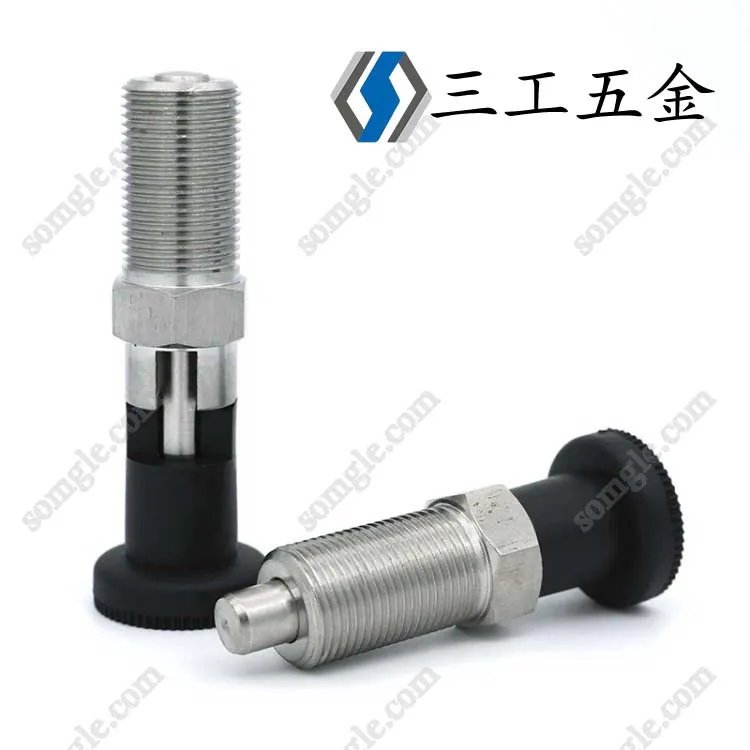Everything You Need to Know About Ball Plungers in Precision Positioning Applications

In industrial manufacturing, precision, repeatability, and assembly efficiency are essential for consistent product quality. One underrated but crucial component enabling these functions is the Ball Plunger—also known as a ball spring plunger or positioning plunger.
Whether you’re working on fixtures, modular tooling, sliding components, or sensitive electronic devices, understanding how and when to use a ball plunger can significantly improve your design efficiency.
In this article, Dongguan Sango Hardware Fasteners Co., Ltd., a 20+ year professional manufacturer of positioning and fastening components, breaks down everything you need to know about ball plungers—from types and applications to material options and custom services.
1. What Is a Ball Plunger?
A Ball Plunger is a spring-loaded device with a ball-shaped nose, designed to position, hold, or push parts into place. When compressed, the spring inside the housing provides constant pressure on the ball tip, ensuring it contacts the mating surface or component.
Key Functions:
- Positioning & indexing
- Light detent locking
- Sliding element support
- Anti-loosening in lightweight structures
Ball plungers are widely used in:
- Electronic enclosure panels
- Mold alignment systems
- Sliding guides or rails
- Tooling fixtures and workbenches
- Robotic modules and precision jigs
2. Common Types of Ball Plungers
🔹 Press-Fit Ball Plunger
- Installed by pressing into a smooth bore
- Space-saving, quick installation
- Suitable for small devices or embedded mounting
🔹 Threaded Ball Plunger
- Comes with an external thread
- Allows adjustable depth and repeat removal
- Available in slotted, hex socket, or knurled head styles
🔹 Stainless Steel Ball Plunger
- Designed for corrosive environments
- Ideal for food processing, outdoor, or medical applications
- Typically made from SUS304 or SUS316
🔹 Ball Plunger with Nylon or Delrin Tip
- Prevents damage to delicate surfaces
- Used in electronics, optics, and plastic assemblies
🔹 Spring-Loaded Detent Ball Plunger
- High spring force for temporary locking
- Used in latches, rotating arms, or adjustable brackets
3. How to Choose the Right Ball Plunger?
| Application Scenario | Recommended Type | Material Option |
|---|---|---|
| General-purpose positioning | Threaded steel ball plunger | Carbon steel / zinc-plated |
| Corrosive or cleanroom environments | Stainless steel press-fit plunger | SUS304 / SUS316 |
| Fragile or sensitive contact | Nylon-tipped or Delrin ball plunger | Plastic + SS body |
| Space-constrained components | Short press-fit ball plungers | Zinc alloy / brass |
| High-force detent mechanism | Strong spring-loaded detent plungers | Hardened steel |
Other selection factors:
- Ball diameter (usually 2~10mm)
- Spring force (light/medium/strong)
- Mounting tolerance (±0.02mm if high precision required)
- Whether threaded or smooth bore installation is preferred
4. Real Case Study: Improving Assembly Precision with Custom Ball Plungers
Client: A consumer electronics manufacturer in South Korea
Challenge: Control panel modules were difficult to align and required manual adjustment, resulting in inconsistent assembly
Solution by Sango Hardware:
- Developed a custom press-fit stainless steel ball plunger with Delrin tip
- Preloaded spring force precisely tuned for panel detent
- Inserted directly into molded plastic housing, no additional fasteners required
Result:
- Reduced alignment time by 40%
- Assembly line throughput increased by 25%
- Defect rate dropped from 3.2% to 0.7%
5. Why Choose Sango Hardware as Your Ball Plunger Manufacturer?
🔧 Over 20 Years of OEM & ODM Manufacturing
Expert in spring plungers, locating pins, quick release fasteners, and more.
🛠 Full In-house Equipment for Precision Production
Over 60 CNC machines, automatic lathes, and quality testing devices.
🌍 Global Export Experience
Products certified to ISO 9001:2015, RoHS-compliant, widely exported to the US, EU, Japan, Southeast Asia.
📐 Custom Design Available
Custom ball diameter, spring force, thread length, and head style. Provide your 2D/3D drawing, and we’ll deliver a prototype within 7 days.
🧪 Strict Quality Control
Full inspection with digital projectors, hardness testers, salt spray machines, and torque gauges.
6. Conclusion: Precision Starts with the Smallest Components
Ball plungers may look small, but they play a massive role in controlling positioning accuracy, repeatable motion, and assembly efficiency.
If you’re:
- Designing a modular fixture
- Looking to improve alignment or locking
- Developing an electronic device requiring repeated access
Contact Dongguan Sango Hardware Fasteners Co., Ltd., and get a high-performance, customizable Ball Plunger that meets your engineering needs.